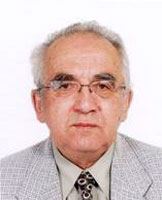Introduction into the article "How to choose lightning rods after all?"
Installation of lightning rods is the oldest event in lightning protection, which has not changed much for the recent 250 years. It is supposed, that lightning strikes into the highest element of the on-ground structure with the most probability, and that is why, a specially installed elevating metal grounded rod or wire will capture its channel upon itself. The lightning protection specialisrs are most of all interested in the exceptions from this rule. The fundamental question in the external lightning protection today is brought to the search of the authentic method of estimation of the number of breakthroughs to the object, protected by the system of lightning rods.
The physics of lightning strike point choice is clear in qualitative relation. The downward lightning which started from the cloud is forming first regardless of the state of the ground surface, because the disturbance of the electric field at the lightning channel head by the on-ground structures are too small compared to the field of its own charge. They cannot influence the trajectory of the lightning. The process of lightning orientation starts with the moment when the counter leader appears, which starts in the electric field of the atmosphere from the top of the on-ground structure, for example, from the lightning rod or the protected structure [1]. In this case, the charges of the thunderclour and the charge transferred to the ground surface are the source of the electric field. The moment of the counter leader start determines the height of the lightning orientation.
The choise of the strike point on the surface of on-ground structures is carried out in the result of the competing development of counter leaders from the lightning rod and on the on-ground structure it protects. The process is more interconnected, the closer are the start points of the counter leaders. The reason of the correlation is the own charge of the counter leader, which is in advance from the rest in its development. Wekening the electric field in the area of heads of channels lagging behind, it stops their further movement [2,3].
Implementation of the calculated model on the base of similar ideas is connected with the exclusive complexities due to great static variation of the main source parameters. First of all, the potential of the space point, where a downward lightning can start from, changes within the range of the potential order; its trajectory and the number of branches forming simultaneously is not defined. Secondly, the conditions of the counter leaders' start from on-ground structures vary randomly, as well as the coordinates of their start points. Finally, it is hard to forecast the trajectories of the counter leaders, their development speed and the transported charge. In total, it strongly limits the possibilities of a strict task solution of the efficiency of the protective action of lightning rods and forces to use the greater or smaller formalization of the calculation model, at least at a partial saving of its physical base [4]. Due to a great complexity, such calculation models did not find mass use in the engineer practice.
Such a situation brought to the development of formalized calculation methods, which lacked physical ideas of lightning or which were simplified to the limit. It started with the introduction of a notion about protection zone. It is a space around the lightning rod, the characteristics of which was the probaility of a lightning breakthrough to the object, completely located within the zone, doesn't exceed the set value. The ambiguity of configuration determination and protection zone sizes by a single parameter - admissible breakthrough probability - should be noted. For that, an a priori setting of the configuration of the surface that limites the protected volume is required. A similar was done in a volitional way for a rod lightning rod (cone with a round base) and for a horizontal wire (duo-pitch flat surface). Initially, the sizes of the protection zones were tried to be set on the base of laboratory tests of small-scale models, in which the role of lightning was played by a long sparl [5]. Such efforts are still continuing, though the trust to them is strongly weakened due to a significant correlation of the test results on the model scale, and also on the polarity of time parameters of the voltage pulse forming the long spark [6,7]. However, protection zones in this or that form are present in almost all regulatory documents on lightning protection, due to what, the methodology of their estimation and comparison of the standardized sizes presents a scientific or practical interest. This article devotes special attention to the methodological approaches to the choice of lightning rods in the lightning protection standard IEC 62305 [8] and the national authorizing documents.
E. M. Bazelyan, DEA, professor
Energy Institute named after G.M. Krzyzanowski, Moscow
Read more "1. Selection of lightning rods in the IEC standard"
See also:
- Useful materials for grounding and lightning protection designers
- Free webinars with the leading industry experts
- Real-life examples of grounding and lightning protection calculations
Related Articles:
 Lightning protection of residential and public buildings - answers to frequently asked questions in the design
Lightning protection of residential and public buildings - answers to frequently asked questions in the design
 Lightning Protection of Large Territories: Parks, Grounds, Plant Territories. Page 1
Lightning Protection of Large Territories: Parks, Grounds, Plant Territories. Page 1
 Lightning Protection of Large Territories: Parks, Grounds, Plant Territories. Page 2
Lightning Protection of Large Territories: Parks, Grounds, Plant Territories. Page 2
 Lightning Protection of Large Territories: Parks, Grounds, Plant Territories. Page 3
Lightning Protection of Large Territories: Parks, Grounds, Plant Territories. Page 3

